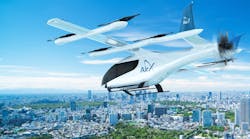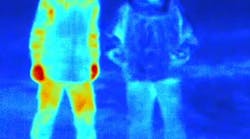John Keller, Editor in Chief
WASHINGTON - Many of the anticipated big cuts in the Pentagon’s 2006 budget request have simply failed to materialize - yet. The U.S. Department of Defense (DOD) budget request contains solid funding for electronics-rich programs such as the Air Force F/A-22 fighter-bomber, the Joint Strike Fighter, and the Army Future Combat System.
DOD and industry leaders are still nervous, however, over spending prospects for the future as the Pentagon starts its long-term budgeting study called the Quadrennial Defense Review - better known as the QDR - and as Congress settles in to go over the DOD budget request with a fine-tooth comb.
DOD leaders want to spend $419.3 billion over the 2006 fiscal year, which begins Oct. 1, up nearly 4.6 percent from this year’s level of $400.1 billion. The budget request does not include money to pay for the war in Iraq, which comes separately in supplemental budget requests.
Two of the most prominent pressures on the DOD budget are the government’s financial health, and the Pentagon’s own focus on military transformation. The rising budget deficit and social security obligations leave ever-smaller supplies of money for defense, and transformation calls for a shift away from traditional large military platforms and a new emphasis on small, fast, light forces linked with communications networks.
Several experts believe that DOD spending cannot continue to increase in the presence of these pressures, even though the Pentagon’s plans still call for increasing military spending by nearly 17 percent over the next five years.
The winners in the 2006 DOD budget appear to be F/A-22, the Joint Strike Fighter, and Future Combat System, despite critics who say the Pentagon cannot afford two major combat aircraft programs, and who contend that the Future Combat System (FCS) is ill-defined and may be too ambitious.
For F/A-22 - a stealthy combination of air-superiority fighter and ground-attack bomber - the Air Force 2006 plan calls for spending $3.8 billion in procurement and $479.7 million in research to buy 25 of these aircraft. The $4.3 billion total for procurement and research on this aircraft in 2006 is down slightly from $4.7 billion this year, but still marks a healthy program.
Although the avionics design for the F/A-22 Raptor is still in flux, this aircraft, if it proceeds far into production, undoubtedly will be a showcase for advanced electronic and optoelectronic components, not only when the aircraft rolls off the assembly line, but also as a platform for long-term future technology insertion.
With the Raptor, the Air Force may benefit from the procurement model that the Navy has successfully used for the F/A-18 Hornet strike fighter for more than two decades. Both aircraft were conceived originally as air-superiority fighters, yet their designs evolved to meet changing threats and now the F/A-18 is one of the preeminent fighter-attack aircraft in the world.
Meanwhile, the Joint Strike Fighter (JSF) has Air Force and Navy funding support and is moving forward strongly in 2006. The JSF program is proposing a $5 billion budget, split roughly down the middle between the Air Force and Navy. This is up nearly 14 percent from 2005 spending of $4.3 billion.
Although the Pentagon’s yearlong QDR study ultimately may recommend cutbacks or eliminations in one of both of these aircraft programs, by all indications DOD leaders fully intend on moving forward with the JSF and the F/A-22. The QDR study should be complete by February 2006.
The Army’s Future Combat System is the cornerstone of that service’s transformational planning. The FCS program will develop network-centric, multi-mission combat system that will manned and unmanned ground vehicles and aircraft in a light, fast, deployable force.
The Army’s FCS plans for 2006 call for a research budget of $3.4 billion, up nearly 18 percent from this year’s level of $2.8 billion. Army leaders have been on the losing end of program cuts over the past several years, with cancellation of the Crusader artillery system, and the Comanche helicopter, and are pulling out all the stops to keep FCS on track.
The 2006 DOD budget does have some cuts, however, one of the most notable is plans to develop and deploy ballistic missile defenses worldwide to shield the U.S. and its allies from national and terrorist missile attacks.
The U.S. Missile Defense Agency (MDA) this year is spending almost $8.8 billion on a variety of research projects that revolve around how to destroy enemy ballistic missiles in their boost, midcourse, and terminal phases.
In 2006 the Pentagon wants to cut MDA’s budget by more than a billion dollars, which is roughly equivalent to the government’s typical annual subsidy to the Amtrak passenger railroad system. The 2006 proposed MDA budget is $7.8 billion.
The biggest cut in the MDA budget concerns research in midcourse ballistic missile defense, or the stage in space at the top of the missile’s trajectory in which multiple independently targeted re-entry vehicles separate from their booster rockets.
The MDA’s midcourse missile-defense segment budget is shrinking from $4.5 billion this year to $3.3 billion next year. Other parts of the MDA budget, however, are to remain the same next year, or have slight increases.
Other cuts are on tap for the DOD’s unmanned aerial vehicles (UAV) programs, where overall procurement and research spending is to decrease from almost $1.9 billion this year to $1.5 billion in 2006. A small procurement cut is expected in the Predator UAV program, with a major cut expected in the Army’s Small UAV program.
Predator’s budget is to reduce from $205.3 million this year to buy 12 aircraft, to $155.9 million next year to buy nine aircraft. The Shadow program, meanwhile, is to reduce from $131.5 million this year to buy eight aircraft, to $26 million next year with no aircraft buys planned.
Spending for the Global Hawk UAV, however, is expected to rise from $354.2 million to buy four aircraft this year to $397.7 million to buy five aircraft in 2006. Increases also are in the works for the Army’s Small UAV, and for research into the Army’s Extended Range UAV, and for the Navy’s Fire Scout UAV. Army officials plan to spend $20 million in 2006 to buy 100 Small UAVs.
Spending for research into the Joint Unmanned Combat Air Systems program is to be reduced from $565.4 million to $350.1 million, and the program next year is moving away from the Defense Advanced Research Projects Agency (DARPA) and into control of the Air Force.




